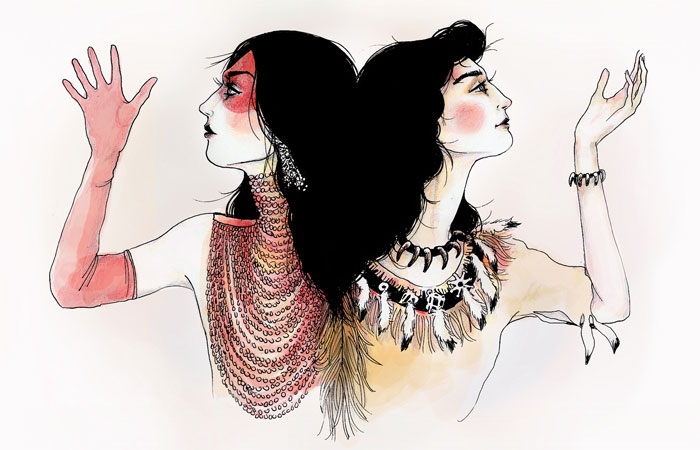Africa’s Latin Quarter
The Walrus
July 2008 (Escape: Summer 2008)
Stephen Henighan
Despite bleak poverty, Mozambique’s multi-ethnic literary culture thrives
In downtown Maputo, the monument to the origins of apartheid is just off Karl Marx Street. Maputo, with its manageable proportions, dreamy views over Delagoa Bay, and cosmopolitan restaurant scene, is one of Africa’s most pleasant capital cities. I walked to the apartheid monument through windblown red dust and young people lugging buckets of water into high-rise buildings. Most modern conveniences—such as traffic lights, credit cards, and cellphones—work in Maputo, but a few, such as the water supply in apartments, are unreliable.
Mozambican literary culture, which I’d come to Maputo to explore, is rooted in the country’s history as a Portuguese colony that gained its independence through a Marxist-Leninist revolution in 1975, and in its proximity to neighbouring South Africa. Nowhere are this history’s contradictions more evident than in the Louis Trichardt Memorial Garden. On the back wall of a patio sunk below the street, a plaster frieze depicts Trichardt, a stout Afrikaner, leading oxen through the wilderness in the late 1830s. A trilingual inscription in Afrikaans, Portuguese, and English, under the heading “They Harnessed the Wilds,” lauds the Portuguese colonialists for their hospitality to the South African Voortrekkers, and their solidarity in fighting off “native tribesmen.” Most self-respecting Marxist revolutions would have demolished this racist kitsch, but Mozambique, a coastal nation with a tolerance for strangers, prefers to allow all the dissonant chords of its past to resonate at once.
“Mozambique is a crossroads,” Mia Couto, the country’s best-known writer, tells me. “Things happened here that are unique in the history of Africa. There’s an acceptance of others, a way of receiving others, that I haven’t found in other African countries. This doesn’t mean that we’re better than others, but rather that there’s a very long history of relating to outsiders.”…
…Mozambique’s racial mixing dates back to between AD 300 and 800, when a vast wave of people of Indonesian descent invaded the East African coastline. Travelling in coastal Mozambique, I passed through areas inhabited by tiny, fine-boned people with remotely Asian physiques. The African languages spoken by these people contain vestiges of Malay vocabulary. There was even significant trade with China, and the spread of Islam brought a tradition of marriage alliances with the Arab traders who dominated Mozambique’s economy in the early Middle Ages. The residue of this period is evident not only in the high-cheekboned racial inheritance of people in northern Mozambique, but in the country’s many mosques, ranging from the Aga Khan’s shimmering Ismaili mosque in downtown Maputo to the tiny, green-painted huts used for worship in villages. Too poor to build minarets, the villages designate their mosques with crescents raised on poles.
Portuguese colonialism, which began with the arrival of Vasco da Gama in 1498, intensified Mozambique’s racial mixing. From the sixteenth to the eighteenth century, unable to manage the sprawling, distant colony, Lisbon assigned Mozambique’s governance to the Viceroyalty of Goa, the Indian jewel in the crown of the Portuguese empire. In defiance of every stereotype of colonialism, Africans in Mozambique had a European language imposed on them by administrators who were ethnically Indian. Many of these Portuguese-speaking Indian civil servants or adventurers intermarried with local leaders. In the Zambezi Valley, in central Mozambique, mixed Indo-Portuguese-African elites broke away from government structures to form autonomous settlements known as prazos.
In the nineteenth century, these palisaded outposts fought a sixty-year war of resistance against Portuguese colonial authority, only succumbing to the central government in 1902. Miscegenation between Europeans and Africans was less common in Mozambique than in other Portuguese colonies, such as Angola or the Cape Verde islands, but the roots of Mozambican identity spring from a tradition that assumes everyone descends in part from an outsider.
The frelimo guerrilla movement, which led Mozambique to independence from Portugal in 1975, promoted interracialism and the Portuguese language—at the time spoken by just a sliver of the country’s population—as the keys to building a nation from the more than twenty distinct ethnic and linguistic groups inhabiting the country’s long Indian Ocean coastline. Photographs of early meetings of the new government, in the Museum of the Revolution in downtown Maputo, reveal a sprinkling of white, mixed-race, and South Asian faces among the black majority…
Read the entire article here.


